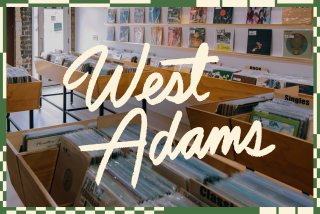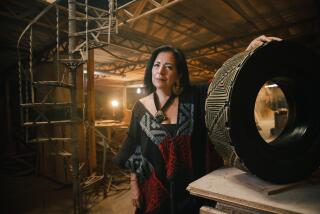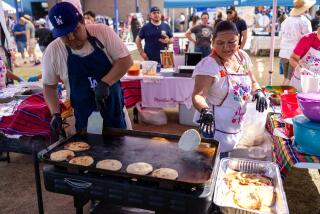Pico-Union intersection to become Msgr. Oscar A. Romero Square
- Share via
Central Americans who have pushed for years to call the Pico-Union area “Historic Central America Town” have yet to earn the title, but they will soon gain recognition at one intersection in the neighborhood.
The Los Angeles City Council on Friday passed a motion to name the corner of South Vermont Avenue and West Pico Boulevard as Msgr. Oscar A. Romero Square. Romero, a martyr among Salvadorans, was a Catholic archbishop assassinated in 1980 during El Salvador’s civil war. A clinic also honors him in the area.
“This is a way of reinforcing history and celebrating him, given his heroic stature in their country and in the community,” said Councilman Ed Reyes, who introduced the motion at the request of community members.
For nearly a decade, several groups have petitioned the city to designate the zone bounded by the 110 Freeway, 3rd Street, Hoover Street and Washington Boulevard as “Little Central America” or some variation similar to Little Armenia or Historic Filipino Town.
But critics argue that the name change would take away from other cultural groups who once inhabited the area, such as the Jewish community.
Petitioners continue to lobby the city for some historic nod to Central Americans.
“The naming of this intersection is great, but we want our petition to get approved,” said Francisco Rivera, board chairman of El Rescate, a Central American group involved in the movement. “We want to be able to tell people that this is the Central America Cultural District, to create a logo for businesses and to help preserve the Central American roots of the area.”
Officials with Reyes’ office said the petition is in the works, and some sort of historic designation may be approved in the next few months.
The area became home to thousands of Central Americans in the 1980s and is one of the most densely populated zones west of the Mississippi River. Today, gentrification has begun to change parts of the neighborhood, but immigrants from El Salvador, Guatemala and Honduras still make up the majority.
esmeralda.bermudez@latimes.com
More to Read
Sign up for Essential California
The most important California stories and recommendations in your inbox every morning.
You may occasionally receive promotional content from the Los Angeles Times.











